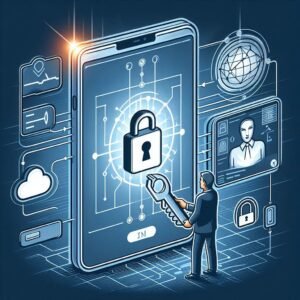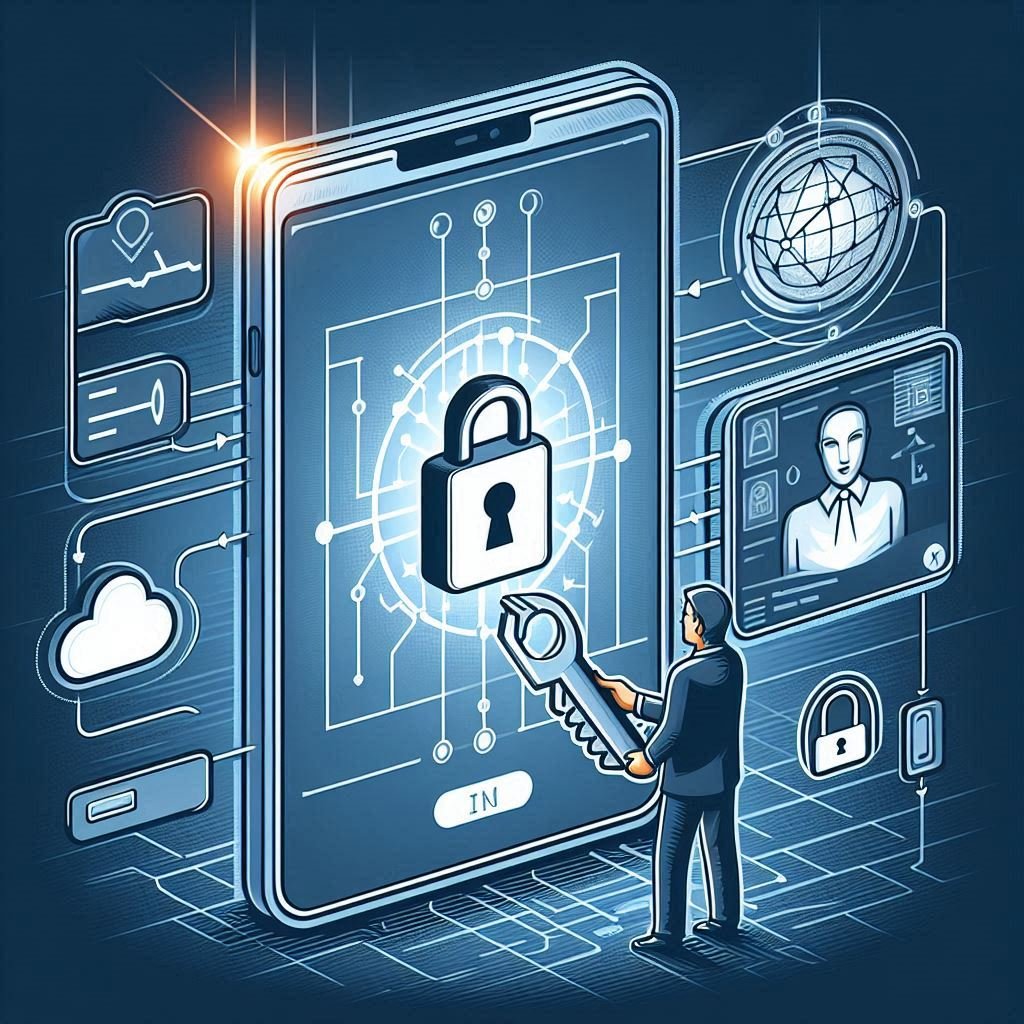Revolutionizing Data Security: The Future of Blockchain in Digital Identity Management: In an age where data breaches and identity theft are becoming increasingly common, securing personal information has never been more critical. Traditional methods of identity verification and data protection are struggling to keep up with sophisticated cyber threats. This is where blockchain technology steps in, offering a promising solution to revolutionize data security and digital identity management. But what exactly is blockchain, and how can it transform the way we manage our digital identities? Let’s delve into the world of blockchain and explore its potential to safeguard our personal information.

What is Blockchain?
Definition and Basic Principles
Blockchain is a decentralized, distributed ledger technology that records transactions across many computers in such a way that the registered transactions cannot be altered retroactively. This ensures the integrity and security of data, as each transaction is linked to the previous one, forming a chain of blocks—hence the name blockchain.
How Blockchain Works
At its core, blockchain operates through a consensus mechanism, where all participants in the network agree on the validity of transactions. This decentralized nature eliminates the need for a central authority, reducing the risk of data tampering and fraud. Each block in the chain contains a list of transactions, a timestamp, and a cryptographic hash of the previous block, ensuring transparency and immutability.
The Importance of Digital Identity Management
Current Challenges in Digital Identity
Managing digital identities involves verifying and authenticating individuals online. However, traditional methods like passwords, security questions, and even biometrics are susceptible to hacking, phishing, and other forms of cyberattacks. These vulnerabilities can lead to significant financial losses, reputational damage, and privacy violations.
The Role of Blockchain in Digital Identity Management
Blockchain technology offers a more secure and efficient way to manage digital identities. By leveraging its decentralized and immutable nature, blockchain can provide a tamper-proof record of identity information, reducing the risk of fraud and enhancing privacy. Individuals can control their own identity data, sharing only what is necessary with trusted parties.
Read also: What are the Technology and Gadgets We Use Every Day?
Key Components of Blockchain-Based Digital Identity Management
Self-Sovereign Identity (SSI)
Self-sovereign identity is a concept where individuals have full control over their digital identities without relying on a central authority. Blockchain enables SSI by allowing users to store their identity data securely and share it selectively with service providers. This empowers individuals to manage their personal information more effectively and securely.

Decentralized Identifiers (DIDs)
Decentralized identifiers are unique, verifiable identifiers created and managed on a blockchain. Unlike traditional identifiers like usernames and email addresses, DIDs are controlled by the individual, providing greater security and privacy. DIDs can be used to authenticate and verify identities across different platforms and services without exposing sensitive information.
Verifiable Credentials
Verifiable credentials are digital statements that can be cryptographically verified using blockchain technology. They provide proof of identity, qualifications, or other attributes, allowing individuals to share verified information with third parties securely. Verifiable credentials can be issued by trusted institutions and stored on the blockchain, ensuring authenticity and reducing the risk of fraud.
Advantages of Blockchain in Digital Identity Management
Enhanced Security
Blockchain’s decentralized and cryptographic nature makes it highly secure against hacking and tampering. Each transaction is encrypted and linked to the previous one, creating an immutable record that is virtually impossible to alter. This ensures the integrity and confidentiality of identity data.
Improved Privacy
With blockchain, individuals have greater control over their personal information. They can choose what data to share and with whom, reducing the risk of unauthorized access and misuse. Blockchain also supports anonymization and pseudonymization, further enhancing privacy.

Reduced Fraud and Identity Theft
Blockchain’s transparency and immutability make it difficult for fraudsters to manipulate identity information. Any changes to the data are recorded on the blockchain and can be easily traced. This helps prevent identity theft and ensures that identity information remains accurate and trustworthy.
Streamlined Processes
Blockchain can simplify and automate identity verification processes, reducing the need for manual checks and paperwork. This can save time and resources for both individuals and organizations. Smart contracts—self-executing contracts with the terms of the agreement directly written into code—can further streamline processes by automating tasks such as verification and authorization.
Use Cases of Blockchain in Digital Identity Management
Financial Services
In the financial sector, blockchain can enhance the security and efficiency of identity verification processes. Banks and financial institutions can use blockchain to verify customer identities quickly and securely, reducing the risk of fraud and ensuring compliance with regulatory requirements. Blockchain can also support KYC (Know Your Customer) processes, making them more efficient and cost-effective.
Healthcare
In healthcare, blockchain can improve the management and sharing of patient data. Patients can use blockchain-based digital identities to securely store and share their medical records with healthcare providers, ensuring privacy and data integrity. Blockchain can also support secure access to health information and streamline administrative processes.
Government Services
Governments can leverage blockchain to provide secure and efficient identity management services to citizens. Blockchain can support the issuance and verification of digital identities, passports, and other official documents, reducing the risk of fraud and improving service delivery. Blockchain can also enhance the transparency and accountability of government services.
Education
Educational institutions can use blockchain to issue and verify digital credentials, such as diplomas and certificates. This can simplify the verification process for employers and other institutions, reducing the risk of credential fraud. Students can also use blockchain-based digital identities to manage and share their educational records securely.
Travel and Hospitality
In the travel and hospitality industry, blockchain can streamline the verification of traveler identities and credentials. Travelers can use blockchain-based digital identities to securely store and share their passports, visas, and other travel documents, reducing the need for physical documents and enhancing security. Blockchain can also support secure and efficient check-in processes at airports and hotels.

Challenges and Considerations
Technical Challenges
While blockchain offers many benefits for digital identity management, there are also technical challenges to consider. These include scalability issues, interoperability with existing systems, and the need for robust security measures to protect against cyber threats. Developing and implementing blockchain-based solutions requires significant technical expertise and resources.
Regulatory and Legal Considerations
The use of blockchain for digital identity management raises important regulatory and legal considerations. These include data protection and privacy regulations, such as GDPR, as well as legal issues related to the validity and enforceability of blockchain-based identities and credentials. It is essential to ensure that blockchain solutions comply with relevant regulations and legal requirements.
Adoption and Integration
The adoption and integration of blockchain-based digital identity solutions can be challenging. It requires collaboration and coordination among various stakeholders, including individuals, organizations, and governments. There may also be resistance to change and concerns about the cost and complexity of implementing new systems. It is important to address these challenges through education, awareness, and collaboration.
Conclusion
Blockchain technology has the potential to revolutionize digital identity management, offering enhanced security, privacy, and efficiency. By leveraging its decentralized and immutable nature, blockchain can provide a more secure and reliable way to manage digital identities, reducing the risk of fraud and improving trust. While there are challenges to overcome, the benefits of blockchain for digital identity management are significant. As the technology continues to evolve, we can expect to see more innovative solutions and use cases emerging, transforming the way we protect and manage our personal information.
FAQs
1. What is blockchain?
Blockchain is a decentralized, distributed ledger technology that records transactions across many computers in such a way that the registered transactions cannot be altered retroactively. It ensures the integrity and security of data through cryptographic hashing and consensus mechanisms.
2. How does blockchain improve digital identity management?
Blockchain improves digital identity management by providing a secure and tamper-proof record of identity information. It enables self-sovereign identity, decentralized identifiers, and verifiable credentials, allowing individuals to control and share their personal information securely.
3. What are the advantages of blockchain-based digital identities?
Blockchain-based digital identities offer enhanced security, improved privacy, reduced fraud, and streamlined processes. They provide greater control over personal information and enable secure and efficient identity verification and authentication.
4. What are the challenges of implementing blockchain for digital identity management?
Challenges include technical issues such as scalability and interoperability, regulatory and legal considerations, and the need for collaboration and coordination among various stakeholders. Addressing these challenges requires significant technical expertise, resources, and awareness.

5. How can blockchain be used in different industries?
Blockchain can be used in various industries, including financial services, healthcare, government services, education, and travel and hospitality. It can enhance the security and efficiency of identity verification processes, improve data management, and support secure access to information and services.
6. What are the main benefits of using blockchain for digital identity management? Blockchain offers enhanced security, improved privacy, reduced fraud, and streamlined processes for managing digital identities. It provides a decentralized and tamper-proof record of identity information, empowering individuals to control their personal data.
7. How does self-sovereign identity work with blockchain? Self-sovereign identity allows individuals to control their digital identities without relying on a central authority. Blockchain enables this by providing a secure and decentralized way to store and manage identity information, allowing users to share their data selectively with trusted parties.
8. What are verifiable credentials and how do they work? Verifiable credentials are digital statements that can be cryptographically verified using blockchain technology. They provide proof of identity, qualifications, or other attributes, allowing individuals to share verified information securely. These credentials are issued by trusted institutions and stored on the blockchain.
9. What are some real-world examples of blockchain-based digital identity solutions? Examples include Estonia’s e-Residency program, Uport’s self-sovereign identity platform, and Civic’s secure identity verification service. These solutions use blockchain technology to provide secure and efficient identity management services.
10. What challenges must be addressed when implementing blockchain for digital identity management? Challenges include technical issues such as scalability and interoperability, regulatory and legal considerations, and the need for collaboration among stakeholders. Addressing these challenges requires technical expertise, resources, and a focus on user education and engagement.

1 thought on “Revolutionizing Data Security: The Future of Blockchain in Digital Identity Management”